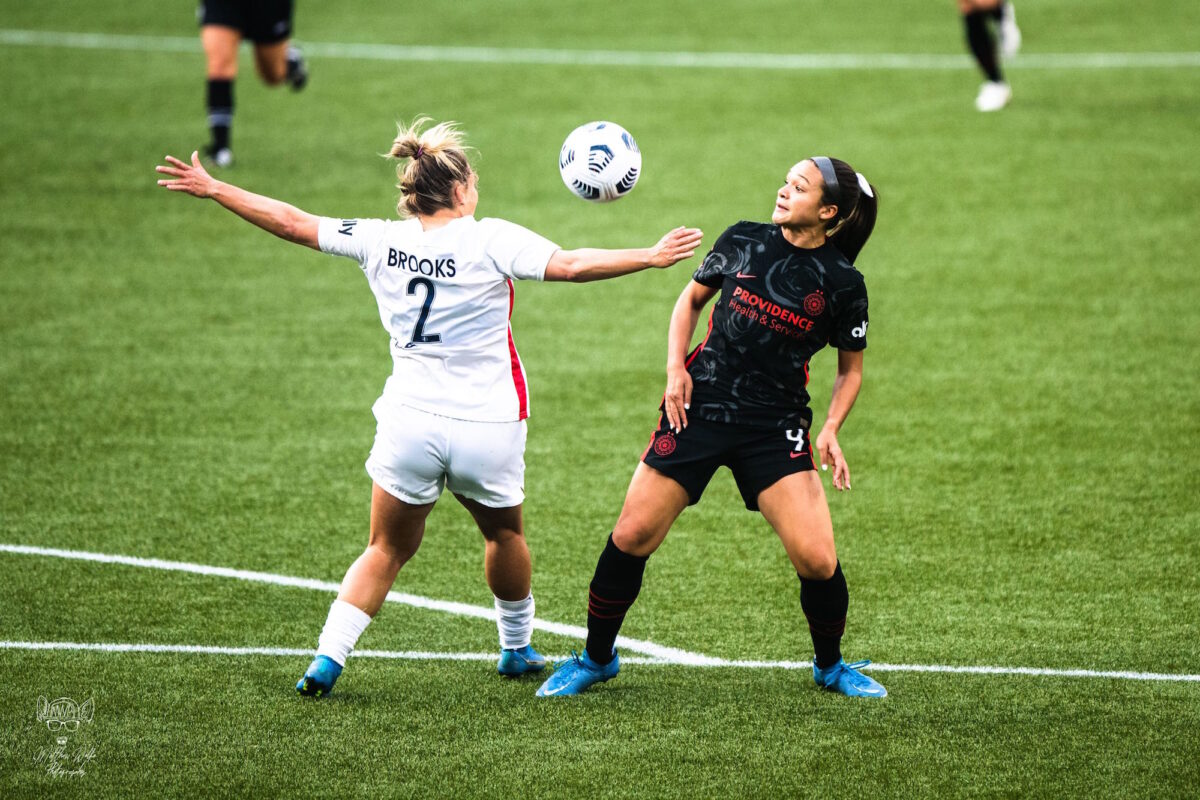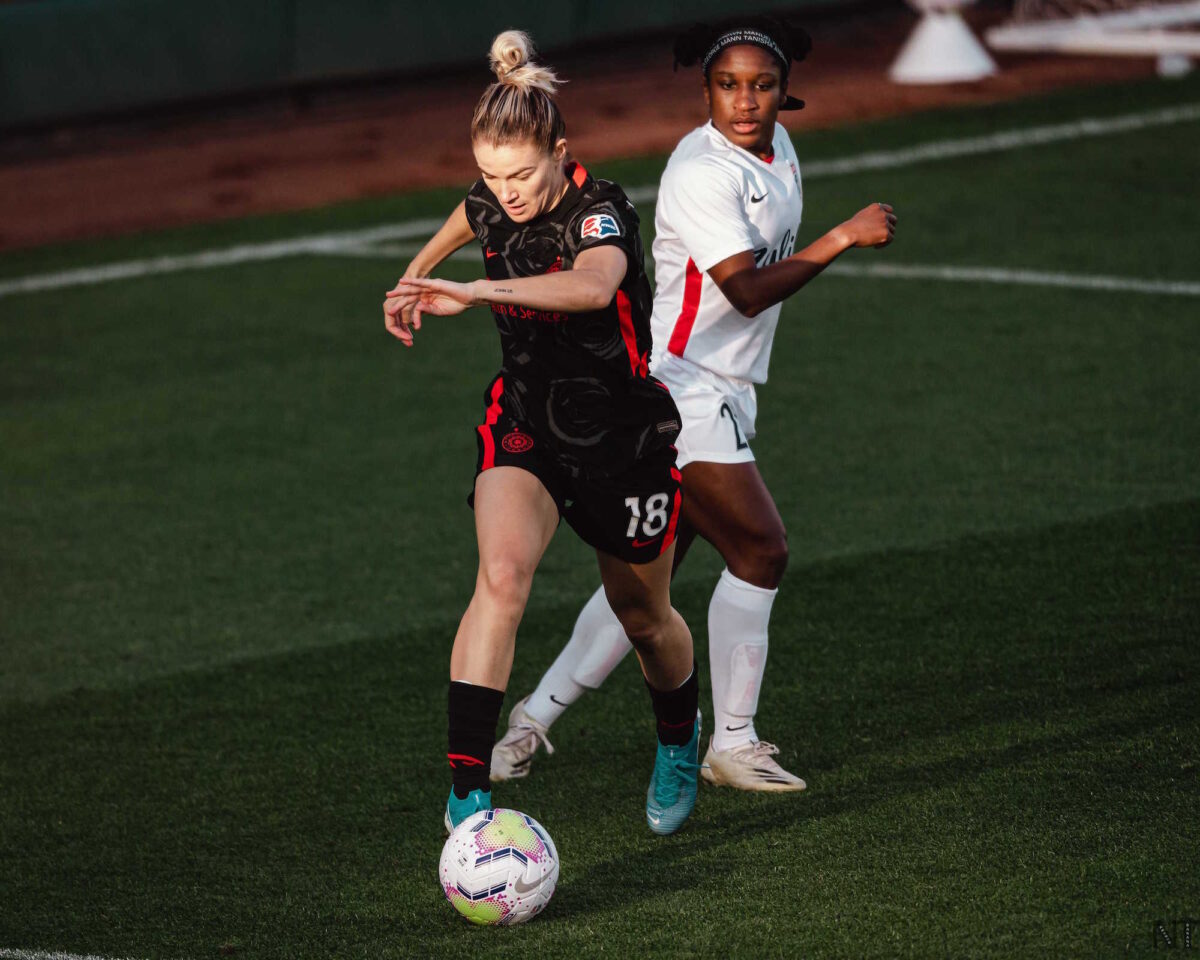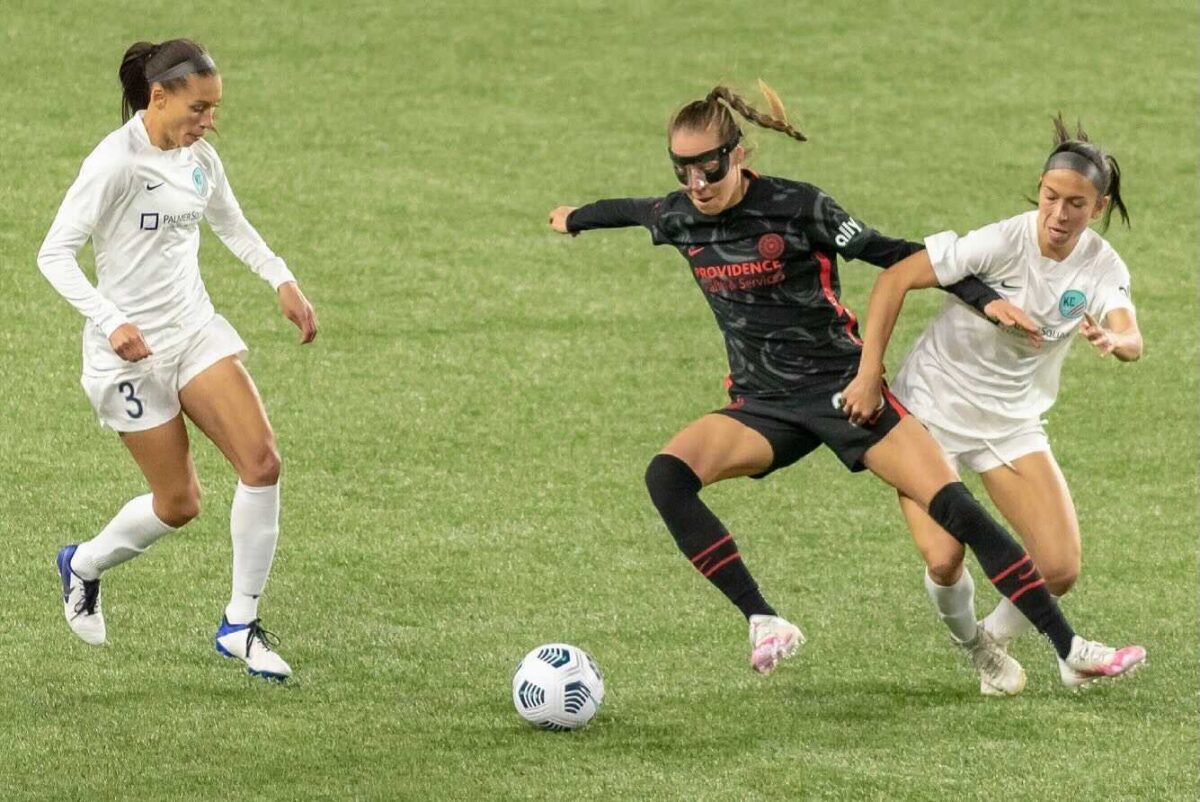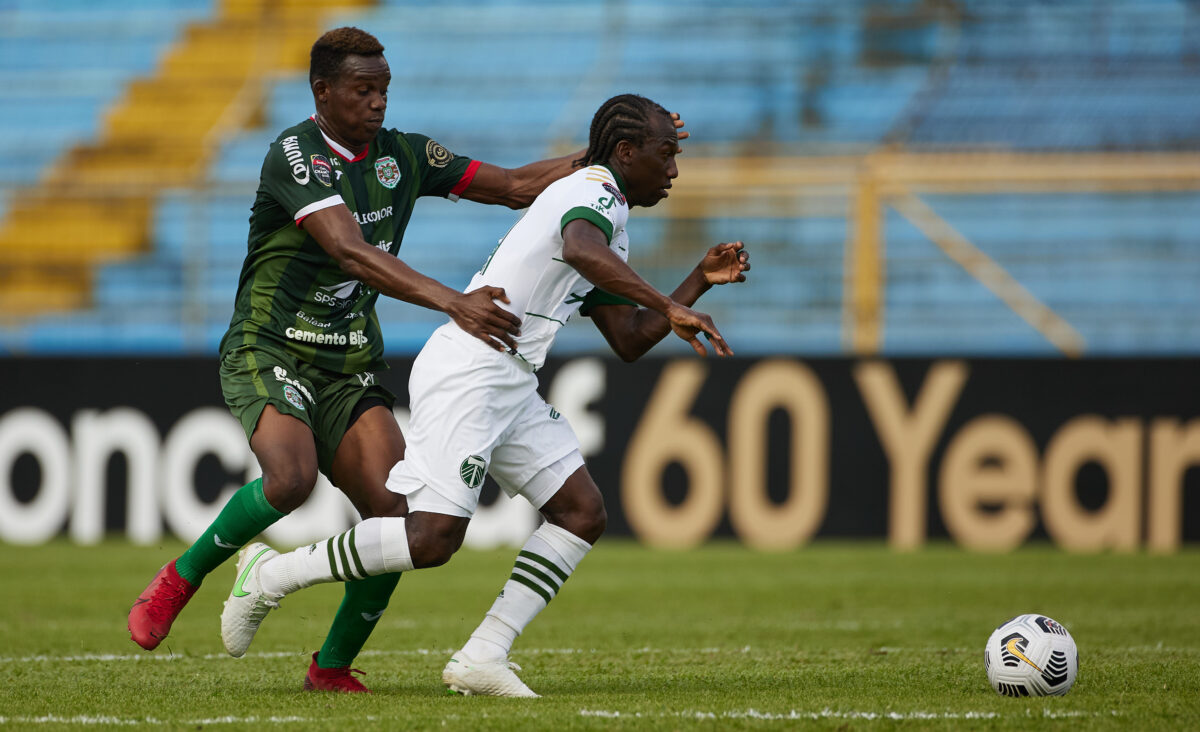The Thorns earned their third victory of the Challenge Cup last night, a 2–0 win over OL Reign, which clinched their spot in the championship on May 8. A beautiful free kick by Lindsey Horan in the 17th minute and a weird chaos goal by Simone Charley early in the second half were the difference between the two teams. Here are a few of my takeaways from the match:
1. “I hope [my rose] never dies” -Crystal Alyssia Dunn Soubrier
Crystal Dunn made her long-awaited Thorns debut last night, and as promised, she’s getting a lot of freedom to roam and create. On paper, she slotted in at the No. 8 in the midfield diamond, but she played that role a little differently from how Rocky Rodríguez has been handling it. She was very much still in a box-to-box role, but tended to sit higher up the field in the attack, often swapping places with Christine Sinclair as she found space between the Reign’s lines.
We’ve been misled a little—Merritt Paulson said at least once Dunn would be playing at forward—but I love her in this position, especially since it lets both Sophia Smith and Simone Charley fit in the lineup. Mark Parsons’s attitude toward this role seems not unlike how he outlined Tobin Heath’s job; in short, get her the ball in possession and let her figure it out.
At times, Dunn, Smith, and Horan looked to not quite be on the same page as each other and the rest of the team, but that’s understandable given how little training time they’ve gotten since the international window ended.
2. The Reign didn’t really show up
The team formerly known as the Seattle Reign put up a pretty lackluster opposition last night. For a lot of the first half, they struggled to defend in an organized way, often giving the Thorns too much time and space, not choosing the right moments to press, and leaving players unmarked and passing lanes open. I am struck by this image of all of Becky Sauerbrunn’s passes, which shows how content the Reign were to let her make one particular entry pass into the final third over and over:
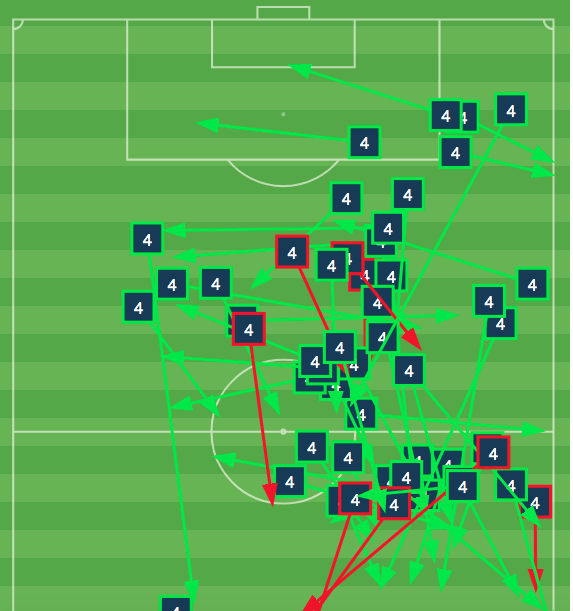
When the Reign did apply pressure, they often focused on Lindsey Horan, and they did succeed in turning her back towards her defense a number of times. At other moments, though, she either broke through the pressure or combined with Sinclair or Dunn to keep moving the ball forward. On top of those players’ individual skill, Portland often had an overload in the midfield, with Natalia Kuikka and Meghan Klingenberg pushing forward and Smith dropping back.
The Thorns also found a number of chances on good old-fashioned balls over the top, as Sauerbrunn and Kelli Hubly were both given as much time as they wanted throughout the first half. Again, sometimes that didn’t matter—Hubly hit a few that were pretty aimless—but with Charley’s speed and dribbling ability up top, that route is a real threat for the Thorns.
The Reign switched on more in the second half, especially once Jess Fishlock and Megan Rapinoe came on. Those two players both looked to have some ideas going forward, and Fishlock in particular (no surprises here) provided defensive grit the midfield had mostly lacked. Nevertheless, Tacoma’s back line kept making weird errors, and their offense was unlucky on the handful of chances they put together.
3. Um?
Sort of a subsection to the last one: I don’t want to take anything away from Lindsey Horan’s free kick, which was gorgeous, but it’s not hard to see what’s about to happen here. I’m not sure why the Reign were set up like this:
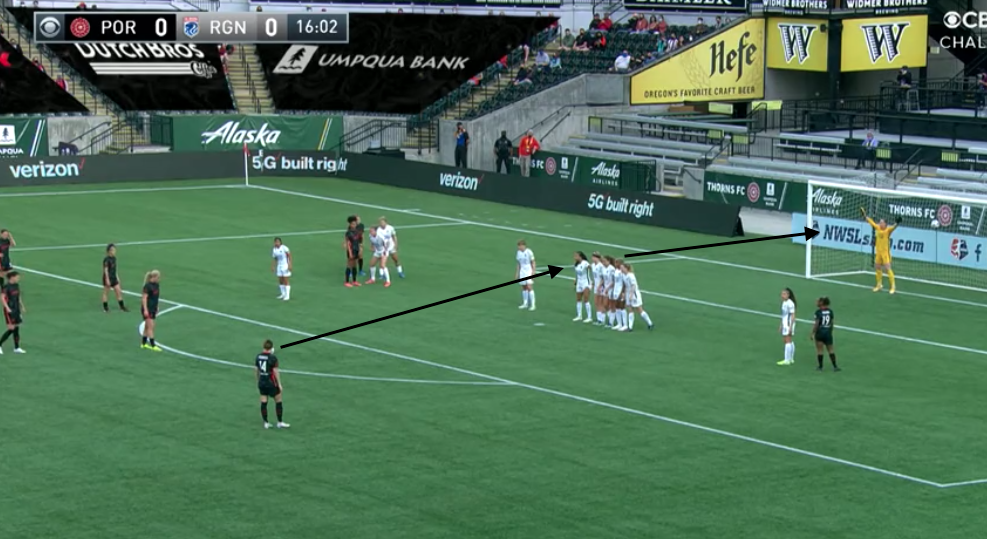
4. Some highlights from the stats
Like they did against Kansas City, Portland significantly out-passed the Reign, with 79.5% accuracy at full time against their opponents’ 71.3%. Six Thorns starters completed at least 80% of their passes, led by Kuikka at 86.2%.
Charley had a record-breaking night:
Simone Charley subbed out after 68 minutes. Finishes the match with
1 goal
6 shots on target (most by any NWSL player since 2019, most by Thorns player in Opta era 2017-)
9 shots (most by a Thorn since 2019)#BAONPDX— Mike Donovan (@TheMikeDonovan) April 22, 2021
And most remarkably, the Thorns as a group broke their record for most shots in a competitive match:
The great @KatieSimons24 confirms that the 29 shots were the most by the Thorns in a competitive match in club history. #BAONPDX https://t.co/Y9lmQ1ndYj
— Mike Donovan (@TheMikeDonovan) April 22, 2021

